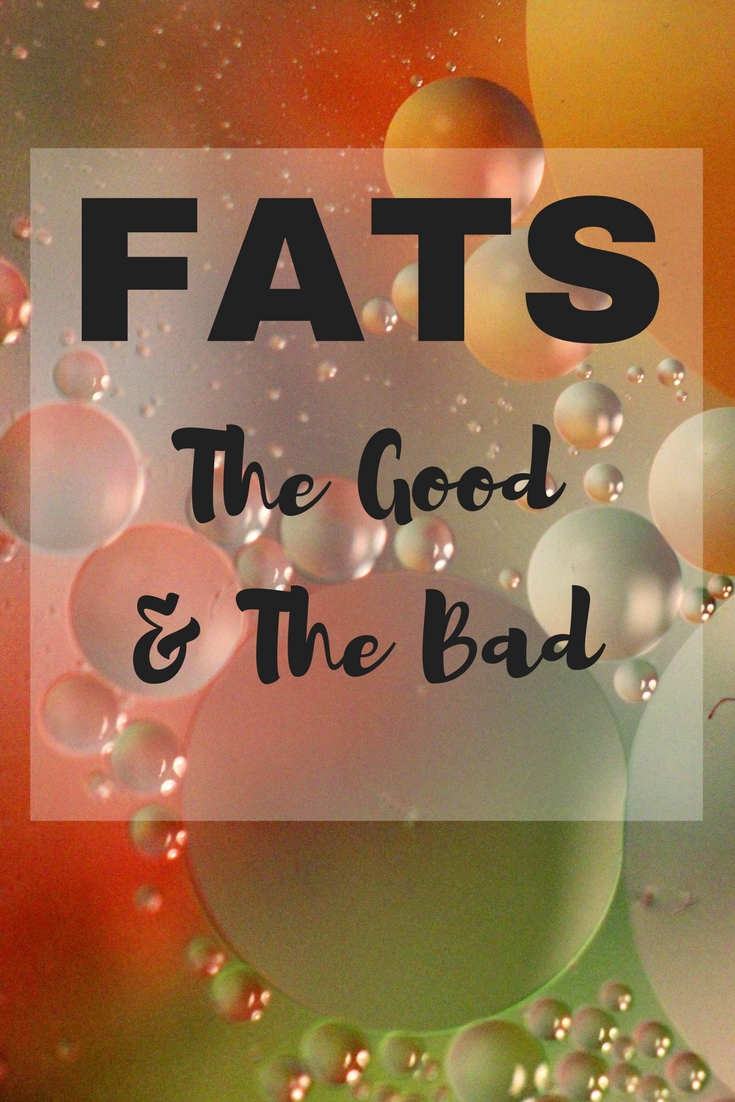About a decade ago, the low-fat diet was just the thing. Everyone talked about the evils of fat and the benefits of avoiding it. Then some studies came out about how some kinds of fat can be healthy and even essential (“essential fatty acids”), so people began to re-think the low-fat diet scheme.

In order to decide how much fat to consume and what kind, it’s important to take a look at the different types of fats, the foods that contain them, and how they compare to each other.
Good Fats
Unsaturated fats are a broad category of good fats that can be further divided into multiple categories.
1. Polyunsaturated fats
Polyunsaturated fats are one type of unsaturated fat. They are considered less stable than monounsaturated fats due to their molecular structure. Polyunsaturated fats can be found in nuts, seeds, vegetable oils (safflower, corn, etc.), and cold water fish. Polyunsaturated fats are an important source of essential fatty acids, or EFAs, which the body cannot manufacture and must obtain through diet. Polyunsaturated fats have a reputation for reducing cholesterol.
* Omega-3 fats are a type of polyunsaturated fat that are said to reduce inflammation, which is why they are implicated in arthritis relief. They are also said to prevent heart disease and other chronic disorders. Because Omega-3s are concentrated in the brain, they are considered essential to cognitive function.
Clinical trials suggest Omega-3s are beneficial in managing ADHD, PMS, skin disorders such as eczema, and depression. Salmon, sardines, tuna, and clams are good sources of Omega-3 fats. Spinach, flax oil, and walnut oil are also rich in Omega-3s.
* Omega-6 fats are also a type of polyunsaturated fat, with many of the same benefits as Omega-3s. Sources suggest that these fats need to be consumed in balance, with more Omega-3s and fewer Omega-6s (a 2:1 ratio of Omega-3s to Omega-6s is said to be ideal). Evening primrose, flax, and olive oil are rich in Omega-6s, as are sunflower, pumpkin, and hemp seeds.
2. Monounsaturated fats
Monounsaturated fats are also an important source of essential fatty acids. These are the fats that are implicated in lowering LDL cholesterol (the bad kind) and even raising the good cholesterol, or HDL. Almonds, avocados, walnuts, olive oil and canola oils are sources of monounsaturated fats.
As you probably noticed, there are cross-overs in the sources of these fats. Some foods, like olives and walnuts, contain both types of unsaturated fats.
Bad Fats
Now for the bad fats. Saturated fats are a general category of bad fats, which can also be divided further. Saturated fats are solid at room temperature. Butter, lard, and palm kernel are examples of bad fats. Saturated fats are said to raise cholesterol and contribute to heart disease. There are other health risks that may be posed by trans fats.
* Trans fats are a type of fat that is considered especially damaging to the body. Trans fats are liquid (unsaturated) fats that have been hydrogenated, and thus made solid, like a saturated fat. This is accomplished by the artificial addition of hydrogen atoms to the spaces in the molecular chain of unsaturated fats.
Because hydrogenation leaves “free” hydrogen molecules sort of dangling off of the fat chain, they act as a “free radical” in the body, attracting oxygen molecules. You may have heard this described as “oxidation.” Oxidation is what makes oil rancid, and many theorize that it has a similar degenerative effect in the body.
Hopefully, this has helped you get an understanding of the different types of fats, so that you can make a more informed choice about the fat which forms part of your diet.
